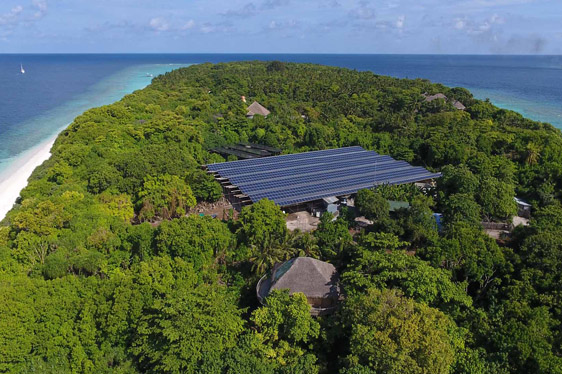Apr 12, 2021
Photovoltaic systems (PV systems) are renewable energy technology that converts solar energy into electricity using photovoltaic technology. These photovoltaic cells, also known as solar panels, provide a reliable green energy solution.
A solar PV system is a sustainable, low-maintenance option for anyone who wants to promote a greener environment, as the system does not cause any pollution or emissions and has numerous advantages.
PV systems use photovoltaic cells to collect solar energy from the sun and convert it into direct current (DC) electricity. The reflection of the sunlight will create an electric field in the PV system, which causes an electric current to flow.
The DC electricity is fed to an inverter which converts the DC electricity into alternating current (AC). This AC power is the type of electricity used for the appliances in your home, also known as AC loads.
A photovoltaic system usually consists of six separate components: the solar PV array, the charge controller, the battery bank, the inverter, the meter and the grid. The correct installation of all these components determines the efficiency of the solar panels.
However, the charge controller and the battery bank are optional. Even if these two components can help you to store and therefore make better use of the electricity generated, they may add to the total price of the PV installation.
Even if the solar PV array generates electricity when the sun is shining, other components are still needed to properly convert, distribute and store the energy generated by the solar panels.
The prices of solar battery banks majorly depend on their capacity, lifespan, and material. The capacity of solar batteries usually ranges from 1 kWh up to 14 kWh, depending on your desired storage size.
Do you want to rely on the electric grid and use fossil fuels as a backup, or do you want your home to be powered by renewable energy only? Consider such factors when deciding which type and size of battery bank you will go for.

Besides the photovoltaic system components that are mentioned above, there are a few other costs to keep in mind, such as the PV module mounting system and an optional backup generator for off-grid systems.
Furthermore, when buying a photovoltaic system, it is important to keep the solar PV inverter replacement costs in mind. The average solar panel has a lifespan of 25 years, whereas an inverter will need replacement after 10 or 15 years.
The same goes for the battery bank, which will need replacement after 5 or 15 years, depending on how heavily it has been used and how well it has been taken care of.
Installing a photovoltaic system in your home is an investment that does not only improve your everyday life quality but also lowers the environmental impact of your home’s electricity generation.
However, finding the right photovoltaic system for your home is not easy. The investment in photovoltaics is quite significant and there are many factors to take into consideration. It is, therefore, important to take a thorough look at your options and the different suppliers.
Zenergy Tech Co., Ltd. is a team with 10-year-experience in the PV field and relevant power electronic equipment R&D ability. Over the years we have been devoted to the rational utilization of renewable energy such as Multi-source hybrid system design and photovoltaic (PV) and implementation solution. Based on a deep understanding of the micropower grid, our comprehensive solution is not limited to PV itself but from the perspective of the whole power supply system, to provide more reliable and efficient power solutions for the owners. If you want to get more information about solar photovoltaic system solutions, please contact us.
How Do Solar Panels Help The Environment?
Nov. 23, 2021
Follow Us
Navigation